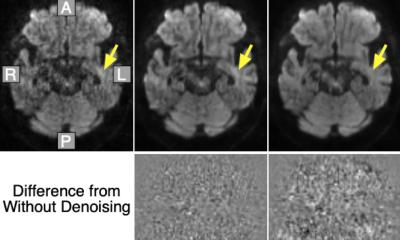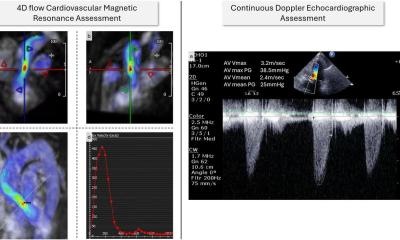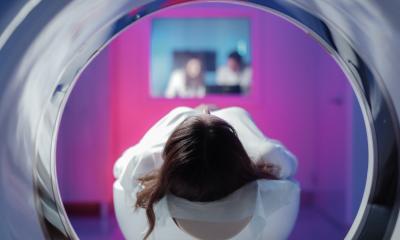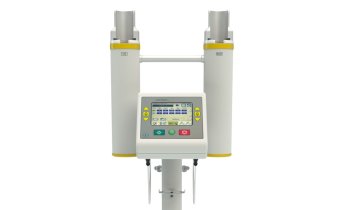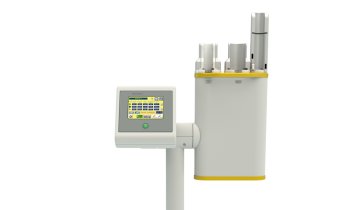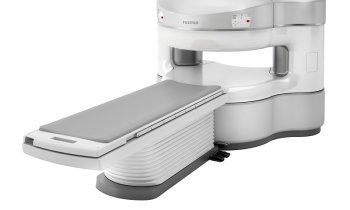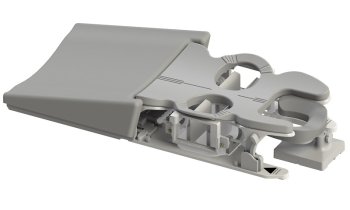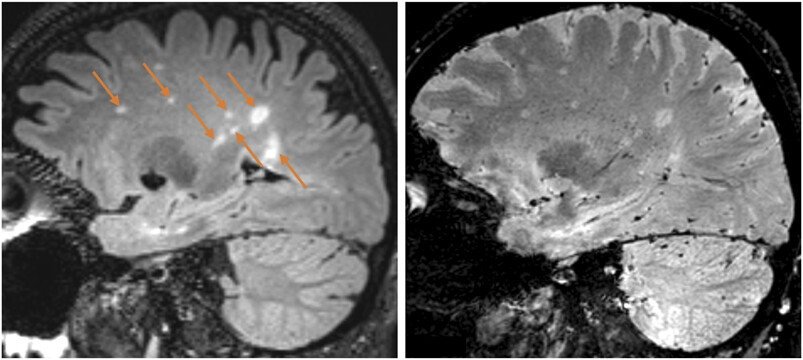
Image source: Allen CM, Clarke MA, Pai HV et al., Neurology Open Access (CC BY-NC-ND 4.0)
News • Neuroimaging
MS diagnostics: MRI can replace painful lumbar puncture
Experts from the University of Nottingham have proven that multiple sclerosis (MS) can successfully be diagnosed using an MRI scan, meaning patients no longer need to undergo a painful lumbar puncture.
In the new study, published in Neurology Open Access, an official journal of the American Academy of Neurology, experts from the School of Medicine found that by using a new MRI scan, they could successfully diagnose MS in 8 minutes. The findings could provide the NHS with a scientific approach to diagnosing MS which is safer, more cost effective and more importantly acceptable to patients. The study was funded by the National Institute for Health and Care Research (NIHR).
MS is a neurological condition which affects around 150,000 people in the UK. It is notoriously difficult to diagnose as it has many symptoms but not all sufferers experience all of them and the disease can progress at different rates.
On average, we think we will reach the diagnosis three months earlier and the change could save the NHS up to five million pounds each year, which can be reinvested in better services for our MS patients
Nikos Evangelou
There is currently no agreement on the best way to diagnose MS. Frequently, people suspected of having MS have a standard MRI scan and undergo a lumbar puncture, where a thin needle is inserted between the bones in the lower spine. Patients often report they find it painful, and it can cause unintended complications requiring hospitalisation or time off work to recover. Although the fluid taken during a lumbar puncture can show evidence of disease, this is not always the case. Abnormalities are not found in everyone who has MS. Some people with conditions that can mimic MS, but need very different treatment, have similar lumbar puncture abnormalities. Both problems can lead to misdiagnosis.
The lead author of the study, Professor Nikos Evangelou, Clinical Professor of Neurology at the University said: “More than half of all people diagnosed with MS in the UK have had at least one lumbar puncture, following the suspicion of MS diagnosis. The findings of our research are particularly exciting as we have now shown that we can give the diagnosis of MS without this painful procedure.”
The team used a clinical MRI scanner, of the type all neuroscience centres have, to carry out a special type of scan called a T2*-weighted MRI which is able to reveal lesions in the brain’s white matter that are centred on a vein — a known indicator of MS. For a conclusive diagnosis of MS, the team developed the ‘rule of six’, whereby if there were six lesions found with a central vein, this confirmed a diagnosis of MS without having to analyse all lesions.
The team carried out a prospective study, in Nottingham, Cardiff and London with patients who had a suspected, but not definite diagnosis of MS. Each patient was given an 8-minute MRI scan and a lumbar puncture and after 18 months, they were able to find out what the diagnosis was and whether it matched that of their initial scan. The results show that the use of the T2*-weighted MRI along with the ‘rule of six’, supported the diagnosis of MS as an alternative to a lumbar puncture.
As a result of this study and previous research conducted in Nottingham and in the USA the International Committee for the diagnosis of MS, recently announced that the MRI scan, as first proposed by the Nottingham research team, is enough to diagnose MS. A lumbar puncture is no longer needed.
Professor Evangelou adds: “Not only will our findings have huge benefits for patients, but it will also mean cost savings for the NHS. People who have lumbar punctures are required to spend at least most of a day in hospital, and for a health service already at capacity, this creates more issues. If there are complications with the lumbar puncture the stay can be longer. With the MRI scan, it takes eight minutes, is completely safe, and then you can go home. On average, we think we will reach the diagnosis three months earlier and the change could save the NHS up to five million pounds each year, which can be reinvested in better services for our MS patients.”
Source: University of Nottingham
25.05.2025



